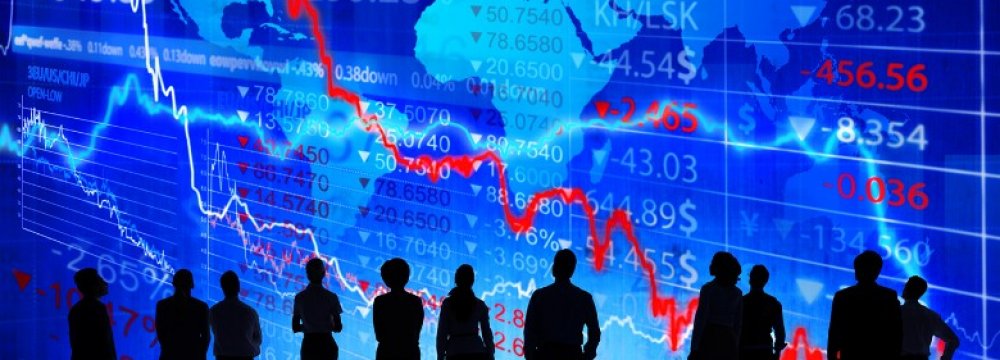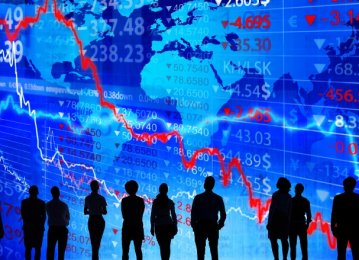Business Failures World's Biggest Problem in 2019

World Economy January 01, 2019 20:17 0 Business Failures World's Biggest Problem in 2019 . . . . . The biggest problem for the global economy in 2019 won’t be the trade war between America and China. It will be massive business failures. Perhaps bank failures, too.The US-China trade war was the big problem in
World Economy January 01, 2019 20:17 0 Business Failures World's Biggest Problem in 2019  . . . . .
. . . . .
The biggest problem for the global economy in 2019 won’t be the trade war between America and China. It will be massive business failures. Perhaps bank failures, too.
The US-China trade war was the big problem in 2018, raising fears of de-globalization and the descent of the global economy into a collection of highly protected national markets.
But financial markets and global corporations will bring the two parties to the negotiation table in 2019, the way they did with NAFTA a few months ago, Forbes reported.
Instead, the biggest problem for the global economy in 2019 will be massive business failures that could also lead to bank failures in emerging markets relying on foreign capital to maintain elevated living standards.
The reason? The rise of interest rates and the end of easy money created by central bankers in recent years.
The explanation is simple and straightforward. Easy money acted as a tsunami, lifting up both the demand and the supply side of the global economy to higher levels. On the demand side, it encouraged consumers to resume taking on more debt. China’s debt to GDP ratio, for instance, has soared, from around 18% in 2008 to over 50% in 2018.
Then, there’s the debt of China’s corporate sector that is a big unknown.
On the Supply Side
On the supply side, it encouraged corporations and entrepreneurs to pursue low profit businesses opportunities.
US total industry capacity utilization, for instance, increased from around 67% in 2009 to close to 80% by 2011, according to the Federal Reserve Bank of Saint Louis.
Meanwhile, the NFIB Small Business Optimism Index rose from close to 80 back in 2009 to close to 108 in 2018.
That’s the highest level since the Reagan years, a period characterized by low interest rates, too.
Simply put, easy money placed the global economy into a cycle of higher growth.
More consumer debt fueled more spending. More spending fueled more investment and the creation of new businesses. Both fed into higher economic growth, which in turn boosted income and employment.
Meanwhile, higher investment helped expand the productive capacity of the economy, keeping inflation steady. And it allowed central bankers to continue with their free money policies.
All that was music to financial markets, which thrive on easy money.
In recent months, however, things have changed. Central banks are raising interest rates. The tsunami of free money is receding. And that is expected to push the demand and the supply side of the economy to lower levels.
On the Demand Side
On the demand side, the end of free money will make it difficult for consumers to take on more debt. On the supply side, it could push low-profit business off the cliff.
The end of free money is setting the global economy into a vicious cycle of slower growth. Less consumer debt could fuel less spending and less spending could fuel waves of business failures.
That’s what happened in 2008-9, shortly after the Federal Reserve raise interest rates and the US economy slid into a recession. US Business failures soared to 6,000 per quarter, while bank failures reached 157.
Compounding the problem this time around is the rise of anti-globalization ideologies around the world, which add to pessimism for the state of the global economy in 2019.
“In my view, the global outlook for growth in 2019 is pessimistic, given the global trend in recent years toward liberal-alternative ideologies that have a tendency to disrupt markets,” says Dimitri Zabelin, currency analyst. “The EU parliamentary elections next year may send chills throughout European markets as the continent faces greater fragmentation.”
Then there’s slower growth in Asia, which could feed further into anti-globalization ideologies.
“Slower growth in China and Japan may weigh down on global growth against the backdrop of a hawkish Fed that is sending shivers up the spine of every investor with exposure to emerging markets,” adds Zabelin.
“Projected slower growth in 2019 may also fuel the rise of anti-establishment parties leading to greater risk aversion and a worsened outlook for growth.”
Investors have begun to sense what’s coming: selling shares of economy-sensitive companies lower and Treasury bonds higher.
. . . . https://financialtribune.com/node/95932Click to copy the urlCopied . Republishing Guidelinessorce
برچسب ها :
ناموجود- نظرات ارسال شده توسط شما، پس از تایید توسط مدیران سایت منتشر خواهد شد.
- نظراتی که حاوی تهمت یا افترا باشد منتشر نخواهد شد.
- نظراتی که به غیر از زبان فارسی یا غیر مرتبط با خبر باشد منتشر نخواهد شد.
شما باید وارد شوید تا نظر بنویسید.

ارسال نظر شما
مجموع نظرات : 0 در انتظار بررسی : 0 انتشار یافته : 0